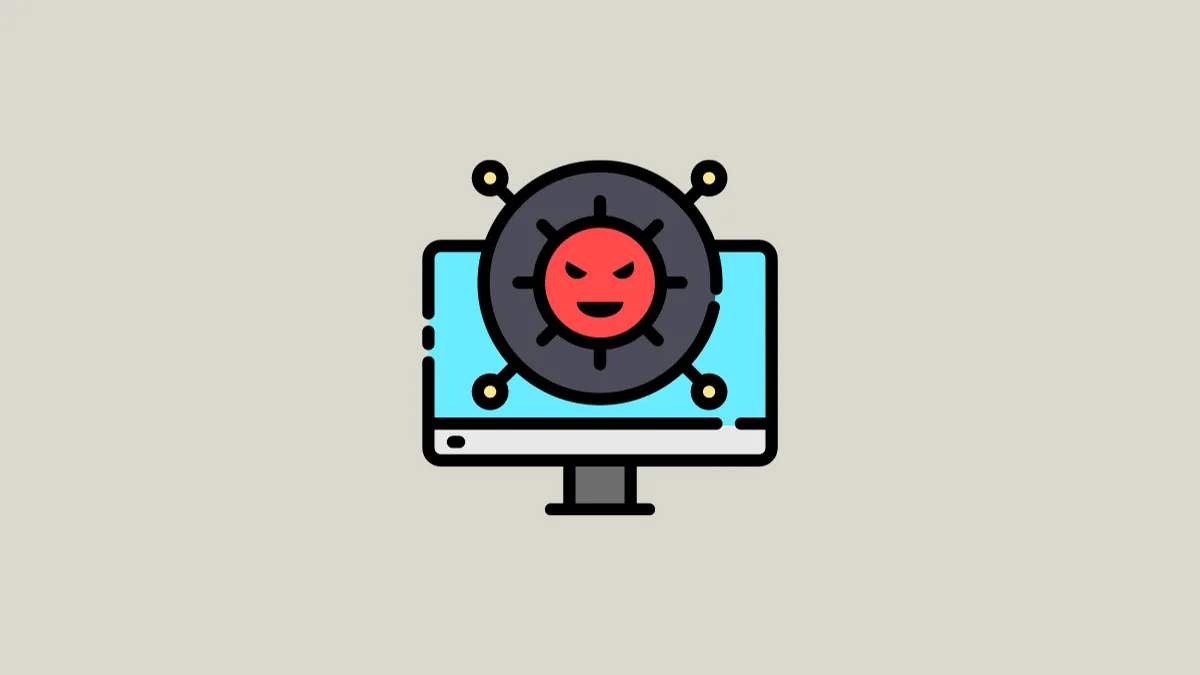There's this new Trojan virus causing chaos on Windows computers, and it goes by the name of AtuctService. You might have noticed this virus either because your antivirus raised an alert or when you saw AtuctService.exe, consuming all your system resources in the Task Manager.
AtuctService can enter your system through various means, like infected downloads, malicious websites, or bundled software. Once it gets into the system, it is hard to remove it. If your computer suddenly slows down and fans start running unusually loud, it might be due to Atuct Service mining cryptocurrency. Before it does more damage to your PC and your files, let's see how to get rid of it.
What is AtuctService?
Atuct Service, also known as 'Atruic Service' or 'AtuctService.exe', is a potentially unwanted program (PUP) identified as a Trojan virus by several security software. It is a kind of BitCoin Minor that is similar to other malware such as Aluc Service and AIService.exe miner.
It is designed to use your computer's resources to mine cryptocurrencies, as well as steal personal data, and use your computer for other malicious activities.
AtuctService can take control of your computer's resources, particularly CPU and GPU, to mine cryptocurrency like Bitcoin without your knowledge. It is also used to steal sensitive data like passwords, bank details, and browsing history. This causes a noticeable drop in performance, making your system sluggish and draining the battery faster.
1. Uninstall the AtcutService Virus in Safe Mode
The Atcut virus might be part of a larger malware, and there could be an uninstaller available to get rid of it. You can check your computer for any unnecessary apps or unknown programs related to AtuctService and try uninstalling them.
Safe Mode disables most non-essential startup programs, including any potential malware and viruses. This creates a clean environment where you can safely find and uninstall malware software without interference.
- Press
Windows+R, type 'msconfig', and hitEnterto launch the System Configuration window.

- Switch to the 'Boot' tab and choose the 'Safe boot' option under Boot options. Then, click 'Apply' and 'OK'.

- Then, click 'Restart' when prompted.

- Once you’re in the Safe Mode, open Windows Settings, go to 'Apps', and click on 'Installed apps'.

- Look for any Atuct Service virus-related programs or suspicious programs (like AtuctApp.exe) from the list of installed apps.
- Then, click the three dots button next to the suspicious app, and select 'Uninstall'.
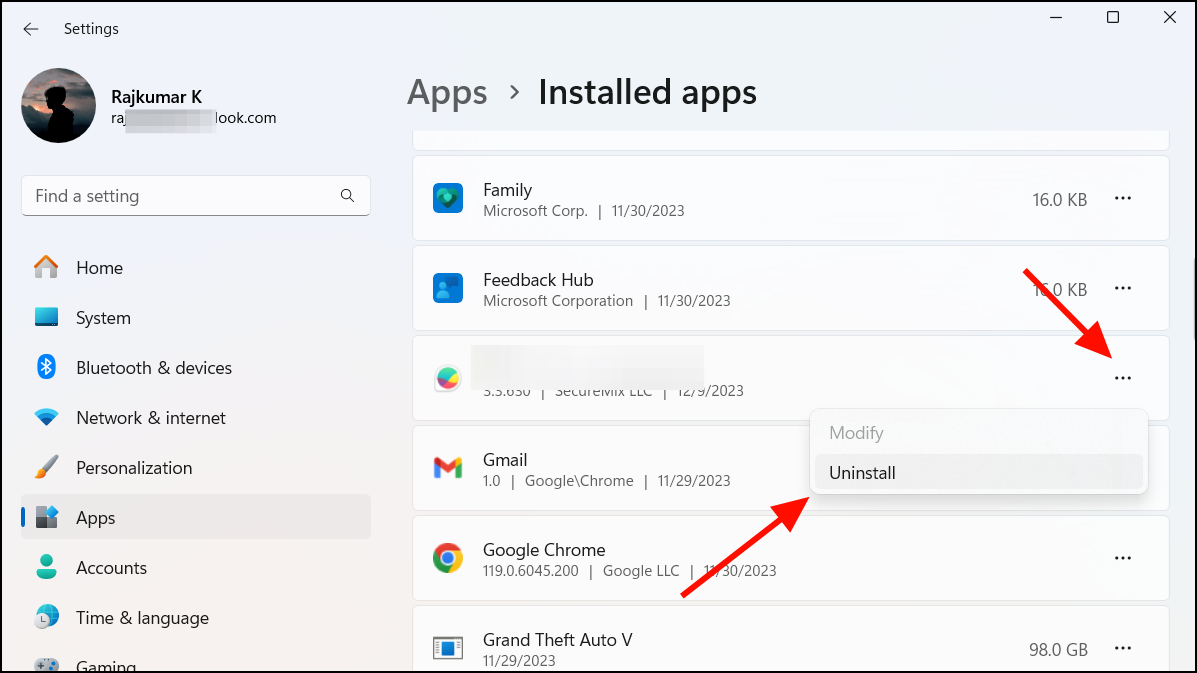
2. Scan Your Computer for Malware and Viruses
Afterward, run a thorough virus scan using an updated anti-malware or antivirus tool to detect and eliminate potential malware or viruses. It’s best to use a dedicated third-party security program; If you don't have a dedicated tool, don't worry! built-in Windows Security tool in your computer is surprisingly effective.
- Launch the Windows Security tool on your PC.
- Then, go to the 'Virus & threat protection' section and click on 'Scan options'.

- Next, choose 'Full scan' and click on 'Scan now'.
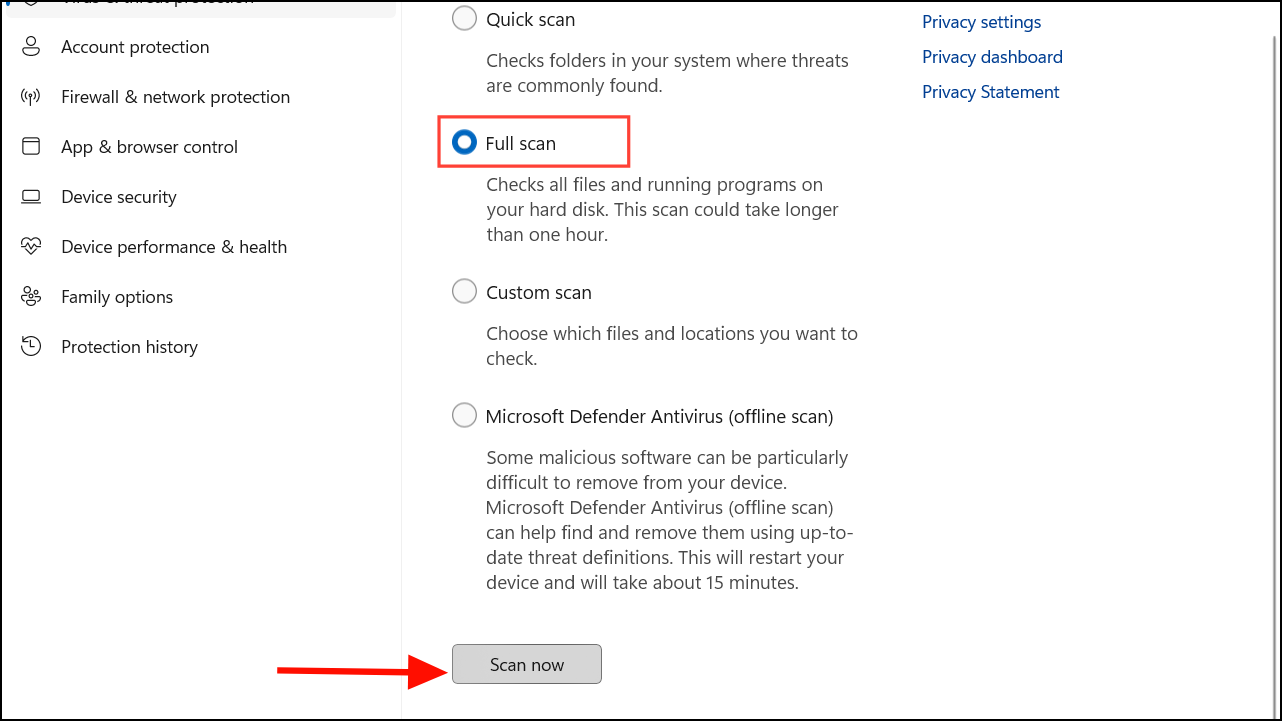
- Once the scan finishes, Windows Security will show you a report of any threats found and actions taken. Check the result carefully to confirm whether the Atuct virus was quarantined or removed.
- If the Full scan fails to remove the virus, try the 'Microsoft Defender Offline scan' option.
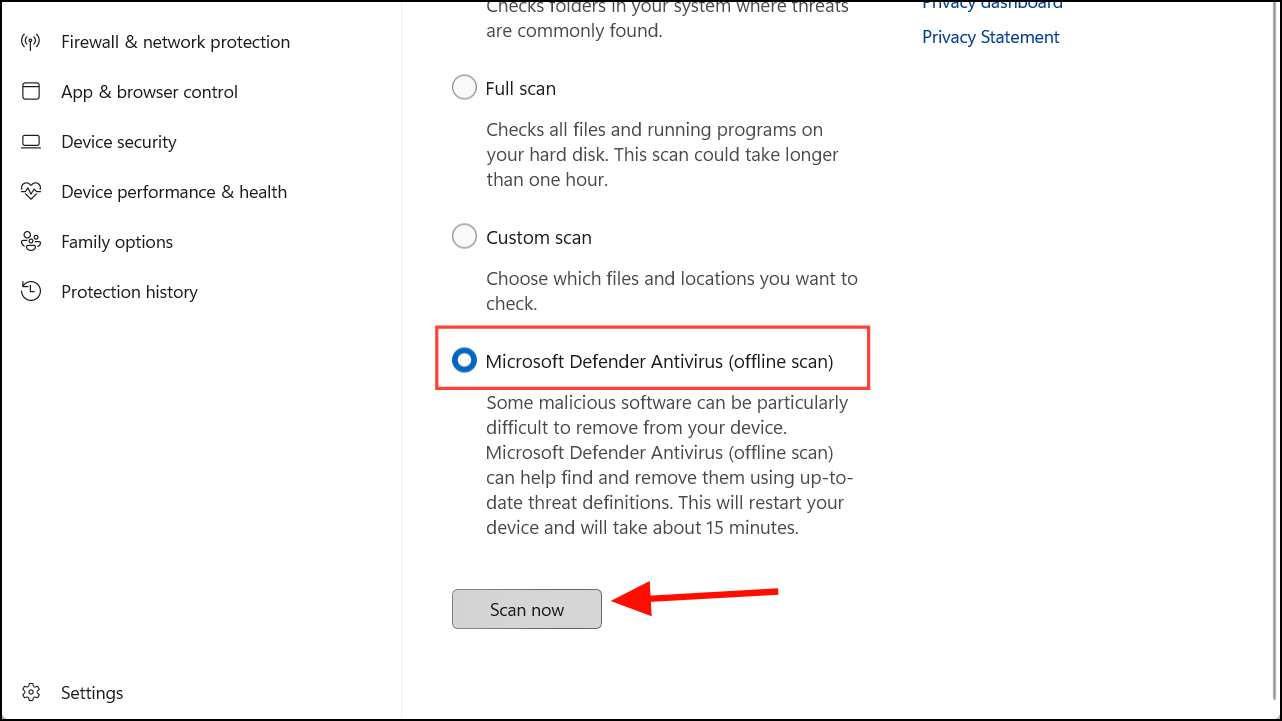
While Windows Defender is a powerful free antivirus program pre-installed on all Windows 10 and 11 devices, it's better to consider some paid third-party options that offer additional features and functionalities.
3. Manually Delete the Atuct Service Files
If the AtuctService lacks an uninstaller or if your antivirus fails to detect the virus, removing it can be challenging. In such cases, your next option is to delete the files related to the Atuct Service virus manually.
Even if the AtuctService.exe doesn't appear in your program list, it will appear in the Task Manager. With Task Manager, you can find where the virus or malware is located and delete it. Here's how:
- Open Task Manager by right-clicking the taskbar and selecting 'Task Manager' or with the shortcut keys
Ctrl+Shift+Esc. - In the 'Processes' tab, find the 'AtuctService.exe', 'AtuctApp.exe', or any related processes. Then, right-click on it and select 'Open file location'.
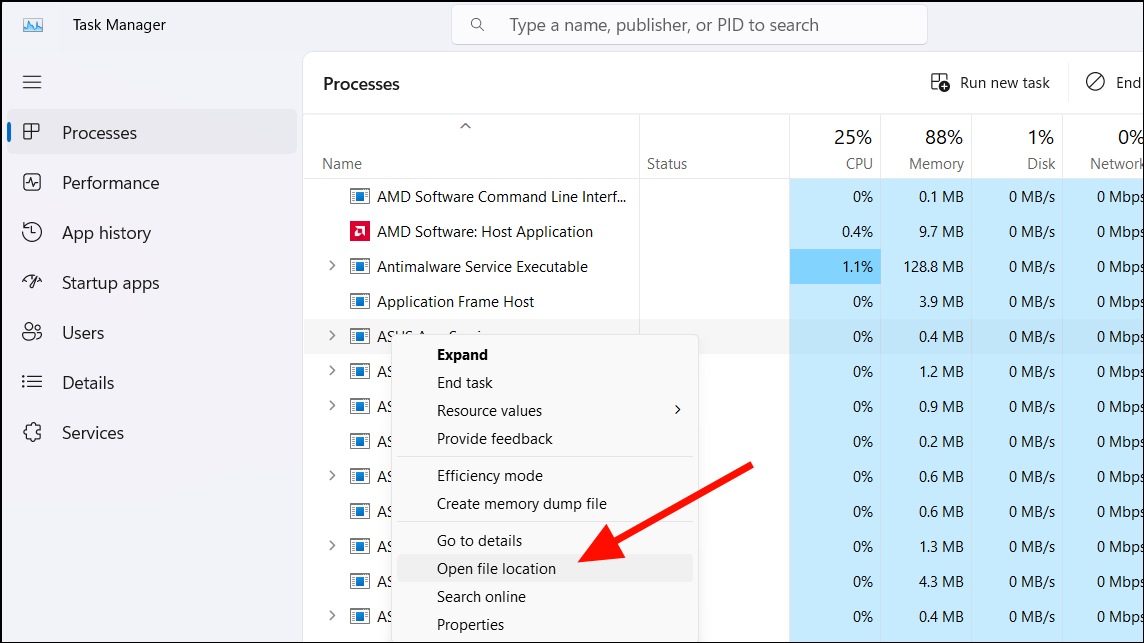
- This will open the folder where the virus is actually located. Take a close look at where the file resides. If it's located in an important Windows system directory like 'C:\Windows\System32', removing it could be tricky. If the malware is not from a Windows directory, remove it by selecting the entire folder and pressing
Shift+Delete. - If a file can't be deleted due to a running process or if some program is blocking its deletion, access Windows Safe Mode and delete it from there.
- To do that, note down the file's location where the virus or malware is located. Then, reboot your computer in Safe Mode and delete the entire folder.
4. Delete the Registries Created by the AtuctService
If you've successfully removed the AtuctService virus from your Windows drive, there are still a few steps you need to take to ensure it's completely eradicated from your computer. Sometimes, the virus may leave behind residual registry entries in your Windows Registry, which could replicate the virus again. So, after deleting the virus, locate any AtuctService-related registry entries and delete them.
- Press
Windows+R, typeregeditand click ‘OK’ to open Registry Editor.

- Before you delete any wrong registry entities, you need to back up the registries.
- To do that, click the 'File' menu and select ‘Export’.
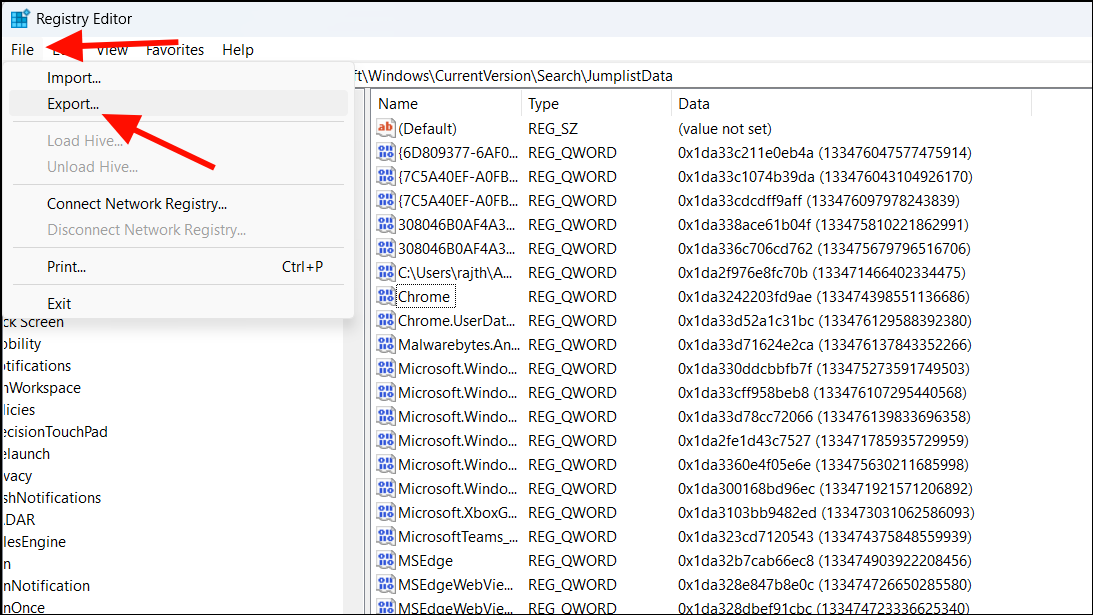
- In the Export Registry window, select the ‘All’ option at the bottom left corner, give a name to your backup, and click ‘Save’.
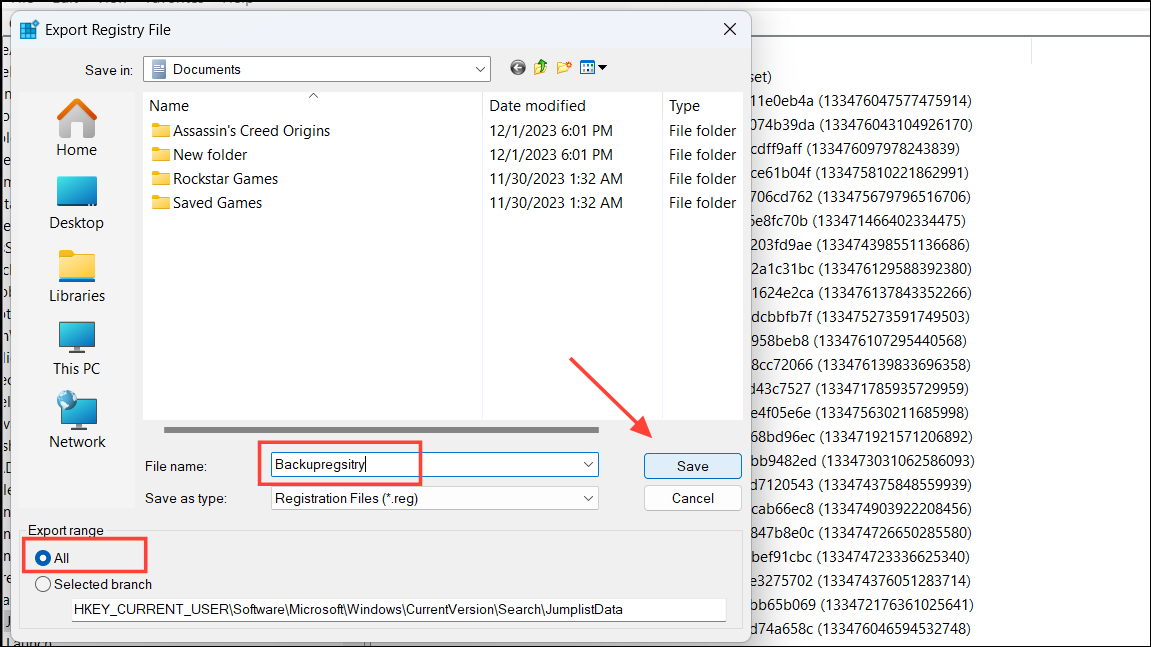
- In the Registry Editor, press
Windows+Fto open the Find window. - Type 'Atuct' or 'AtuctService' in the Find box and click ‘Find Next’.
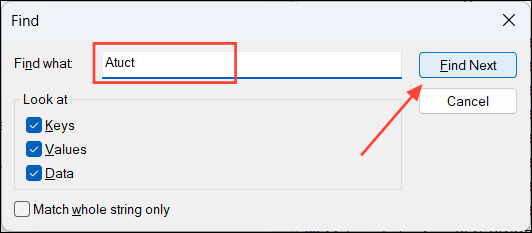
- Once you located the AtuctService entry, right-click the folders related to AtuctService and click ‘Delete’.
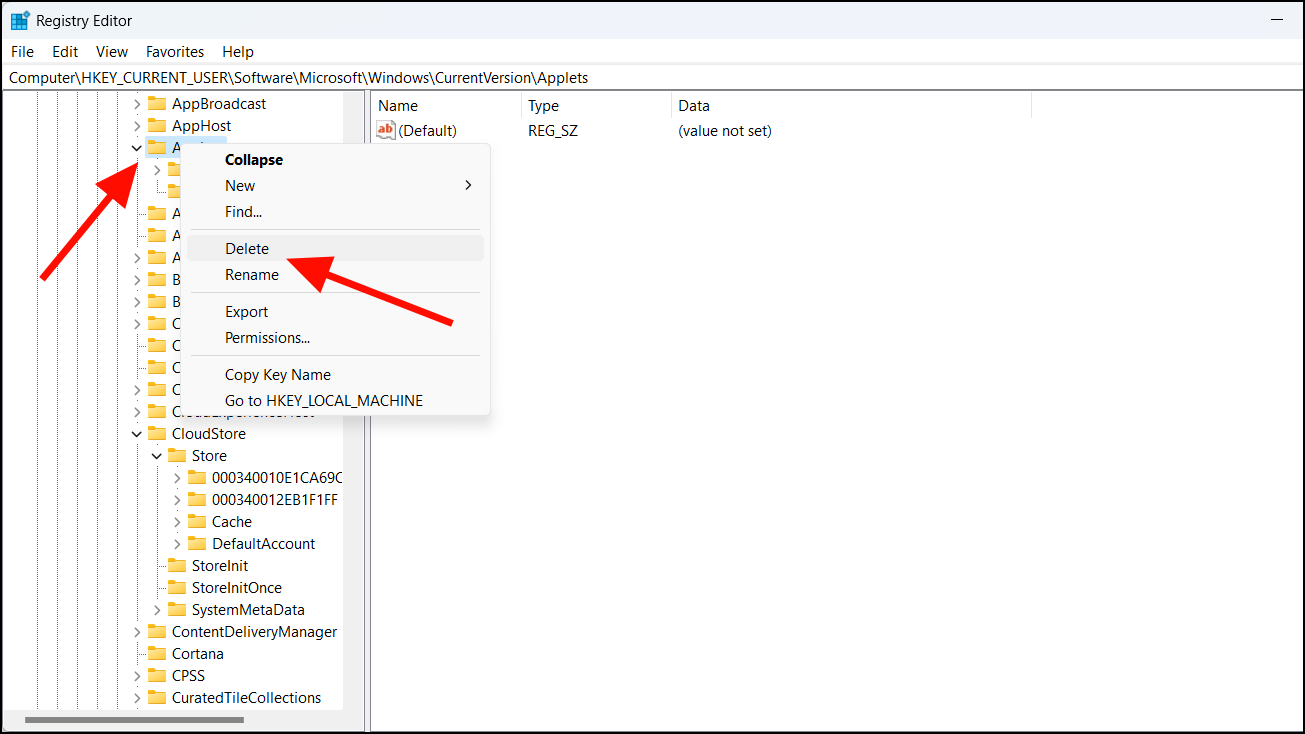
- There may be more than one registry key related to the AtuctService in the Registries. So, click
F3again to locate the next AtuctService registry entry. Then, delete the corresponding folder. - Keep pressing the
F3until all the registry keys related to AtuctService are deleted. Don’t delete entries you're unsure about. - Close the Registry Editor and restart your computer.
5. Reset Browsers to Remove AtuctService Hijackers
Another important step to ensure your computer is free of viruses is to reset all your browsers. When the virus was active on your computer, it might have introduced browser hijackers, or the hijackers or malicious extensions in your browser could have infected your computer with AtutService.
They can mess with your settings, redirect your searches, bombard you with unwanted ads, and install malware on your computer. Resetting various browsers usually involves a similar method, but the exact steps and options may vary.
- To reset Google Chrome, click the three dots menu, and select 'Settings'.
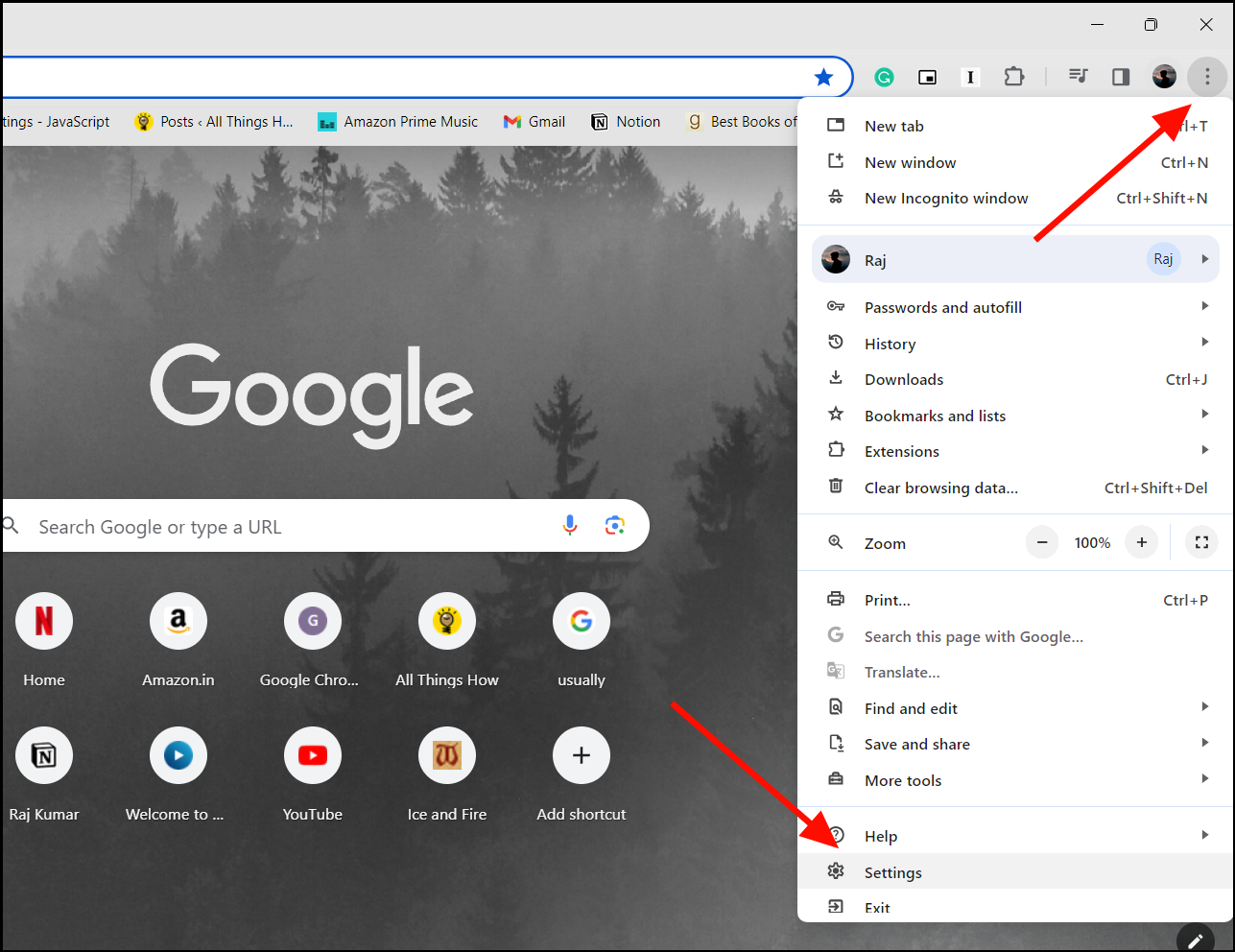
- On the Settings page, select 'Reset settings' in the left pane, and click on 'Restore settings to their original defaults'.

- Then, click the 'Reset settings' button on the pop-up windows.
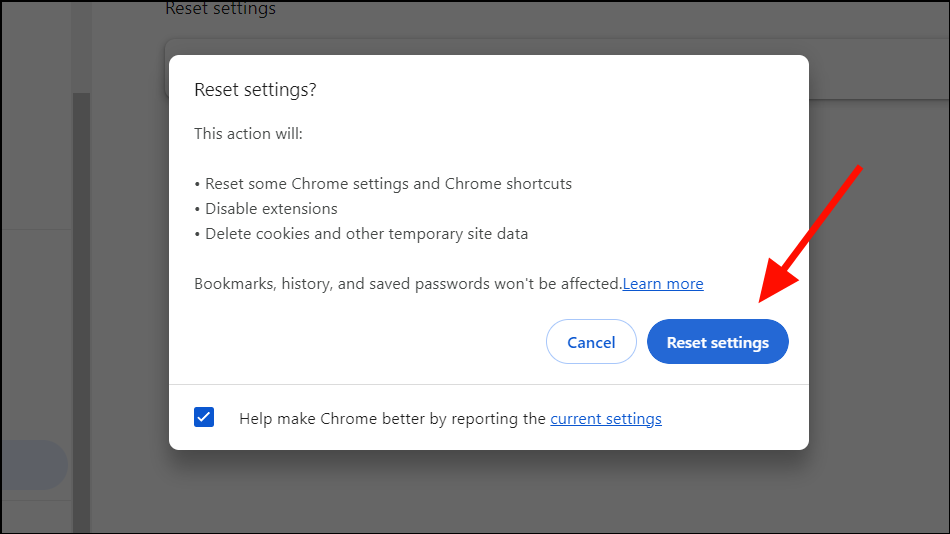
- After resetting the browser, make sure to remove any unwanted or suspicious extensions from the browser. To do that, click the three dots, click 'Extensions', and select 'Manage Extensions'.
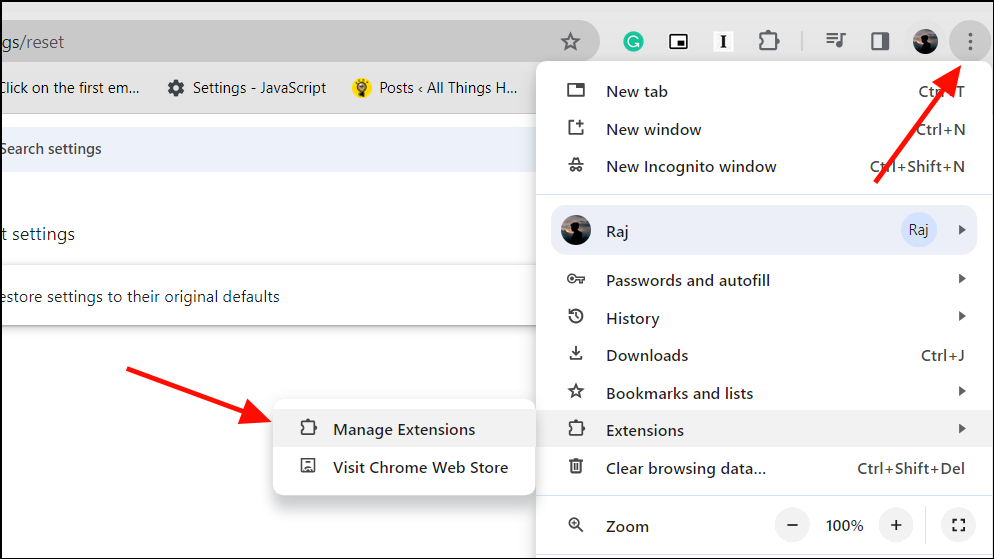
- Then, remove all the unnecessary and unknown extensions.

6. Remove the Virus via a Third-Party Security Program
Removing a trojan like the AtuctService using built-in Windows Security or manually can be a challenge, especially for less tech-savvy users. There are specialized programs specifically designed to handle tough threats like these. Consider using a third-party antivirus for a comprehensive system malware and virus scan to fix these virus threats effectively.
Use the RKill Tool to kill Malicious Processes
RKill is a free program designed to kill malicious processes that might be preventing your computer from running other security software and performing malware scans. It detects running processes related to known malware and forcefully shuts them down.
Download the RKill portable tool from the official website and run the tool. It's a command line tool that automatically scans and kills viruses and malware without further input.
Run AdwCleaner to Clean malware and Viruses
Another handy tool for clearing your computer of adware, PUPs, and preinstalled software is AdwCleaner. Developed by Malwarebytes, AdwCleaner is a free tool designed to locate and remove unwanted programs and junkware. If RKill proves ineffective, running AdwCleaner can help clean up your computer.
Use Malwarebytes to Remove the Virus
If the aforementioned tools fail to detect the virus, consider using a reliable premium third-party software like Malwarebytes. If you already have Malwarebytes, that's great, but you can also download and use the Malwarebytes trial version, which lasts for 15 days and is highly effective in cleaning up most viruses and malware from your computer.
Before running Malwarebytes, we'll need to tweak one setting temporarily for optimal results:
- Download the latest version of Malwarebytes from the official website. Then, install it following the on-screen instructions.
- Once installed, launch Malwarebytes and click the ‘Settings’ icon.

- Go to the ‘Security’ tab and scroll down to ‘Windows Security Center’.
- Here, temporarily disable the option ‘Always register Malwarebytes in the Windows Security Center’.

- Then, go back to the home page and click the ‘Scan’ button.

- Review the detected threats and choose the appropriate action, like ‘Quarantine’ or ‘Remove’.
- Once satisfied, click ‘Finish’ on the scan results. You may need to restart your computer to complete the cleanup process.
7. Run System Restore to remove the Virus
System Restore might be able to help remove the AtuctService virus by taking your computer back to a point before you got the virus. This would undo the installation of the malware that spread the virus. Here's how:
- First, open the Start menu, type 'system restore', and select the 'Create a restore point' control panel.
- When System Restore opens, look for the option 'Choose a different restore point'. If it's available, choose it instead of the 'Recommended restore point'.
- If you don't see this option, don't worry! Simply click 'Next' to proceed.
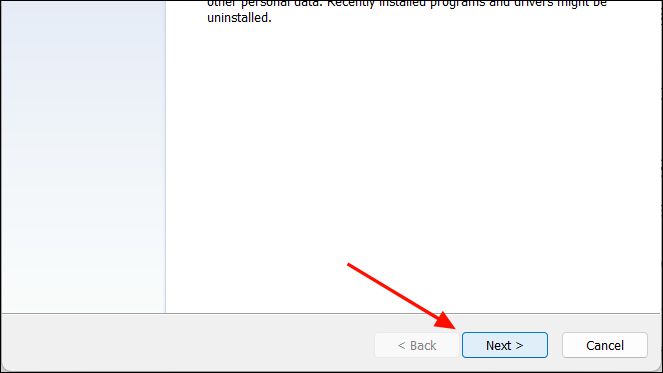
- A list of available restore points will appear. Choose the most recent point from before you noticed the virus on your PC. If you only have one restore point, choose it and click 'Next'. You can also click 'Scan for affected programs' to see a list of applications that will be uninstalled when you restore to the chosen point.
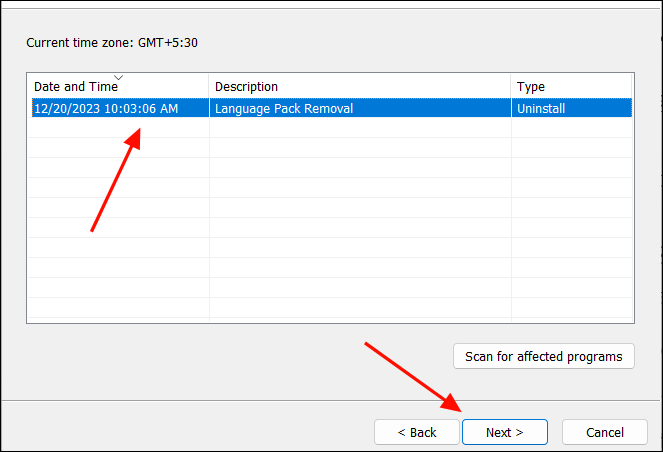
- Finally, click 'Finish' to start restoring your computer to its previous state.
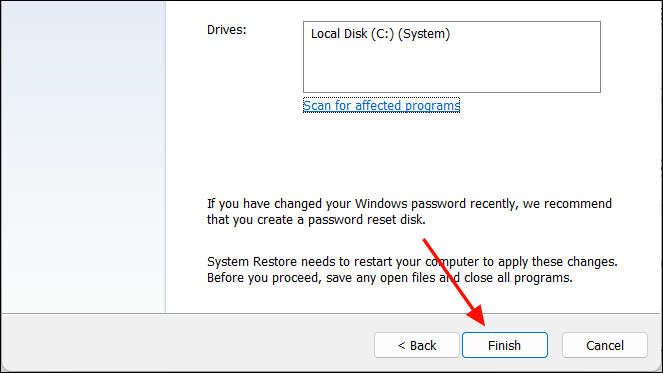
The restoration process may take some time. Once it's complete, your computer will automatically restart.
8. Reset Your Windows
If all else fails, resetting or reinstalling your Windows might be the last resort. Performing a factory reset on your Windows 11 computer erases any malicious software or viruses lurking within Windows.
It is recommended to reset your Windows from the Boot menu when removing malware and viruses. Since Windows reset erases everything, you might need to back your files to an external hard drive or cloud storage before resetting the computer. Here's how you can reset Windows 11 from the boot:
- Shut down your computer and turn it back on.
- As soon as your computer turns on and shows the first screen, press the
F11,F9orF12key to access the Windows Recovery Environment (WinRE). If none of the above shortcut keys work, click the power button on the sign-in screen and click 'Restart' while holding down theShiftkey.

- Once you are in the Windows Recovery Environment, select the 'Troubleshoot' option.
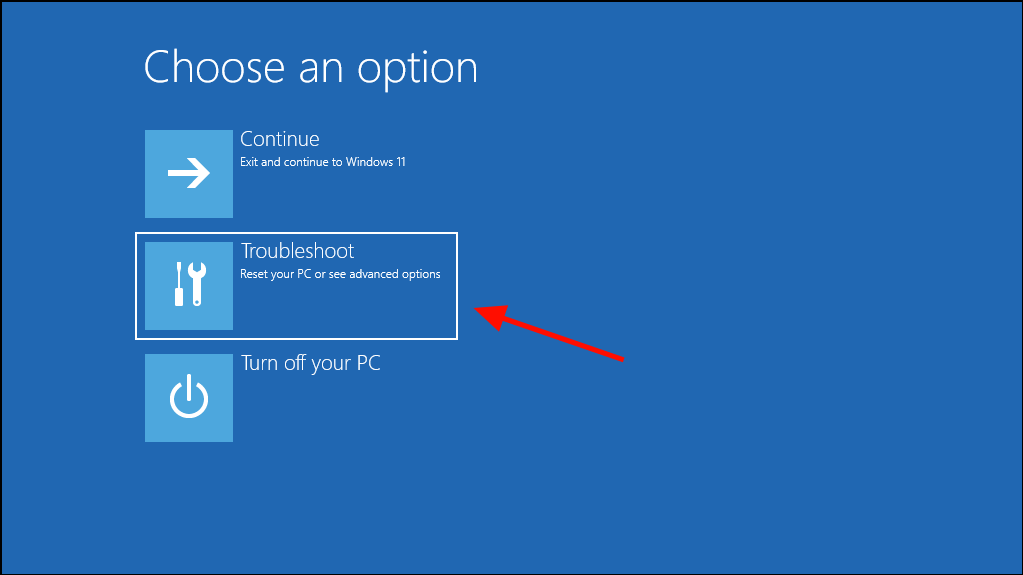
- Next, choose the 'Reset this PC' option.

- When you get to the 'Reset this PC' screen, select the 'Remove everything' to completely wipe your Windows, and remove all files, settings, and apps, return it to its factory default.
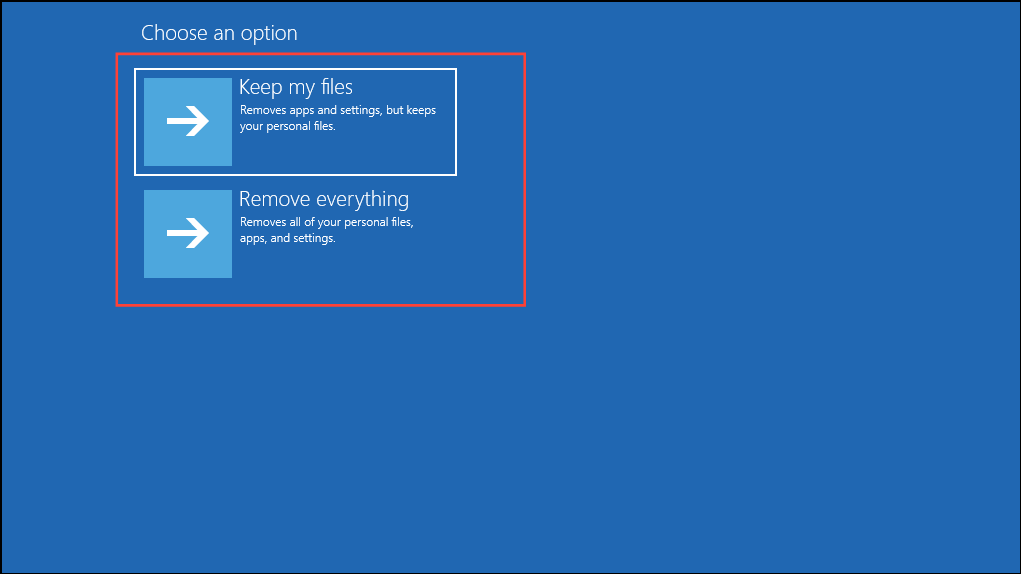
- Then, choose the desired option for reinstalling Windows:
- Cloud download downloads the latest Windows operating system files from the Microsft Server and reinstalls the OS. This may take longer but you'll have the most recent version. The download will require 4GB of your data.
- Local reinstall uses the Windows system image from the previous installation to reinstall the OS. This is faster but it installs outdated versions.
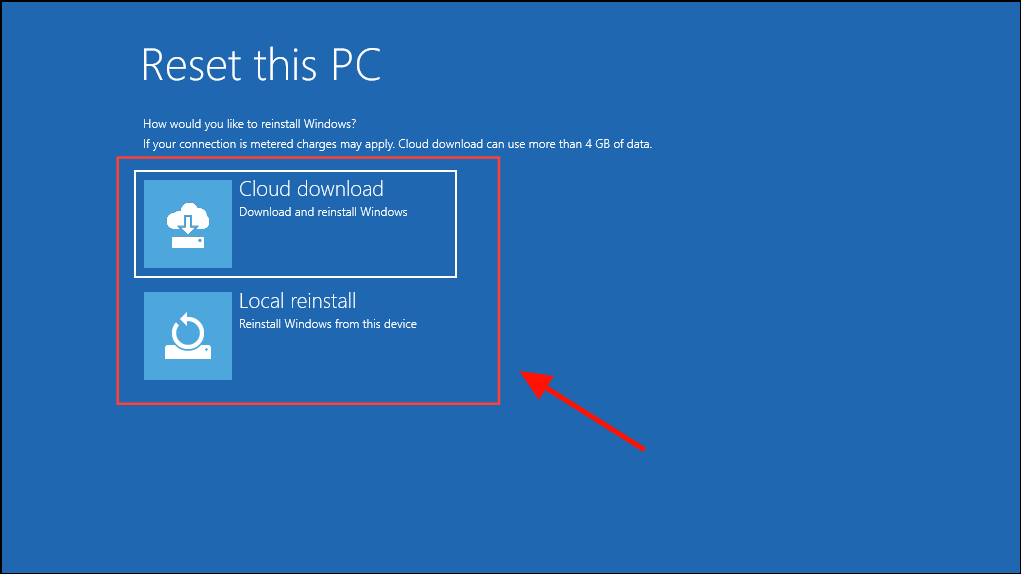
- In the next stage, you'll see two more choices: 'Just remove my files' or 'Fully clean the drive'. The first option quickly erases your files but leaves the drive intact, while the second option takes more time but fully cleans the entire drive. The second option is recommended if the computer is heavily infected.
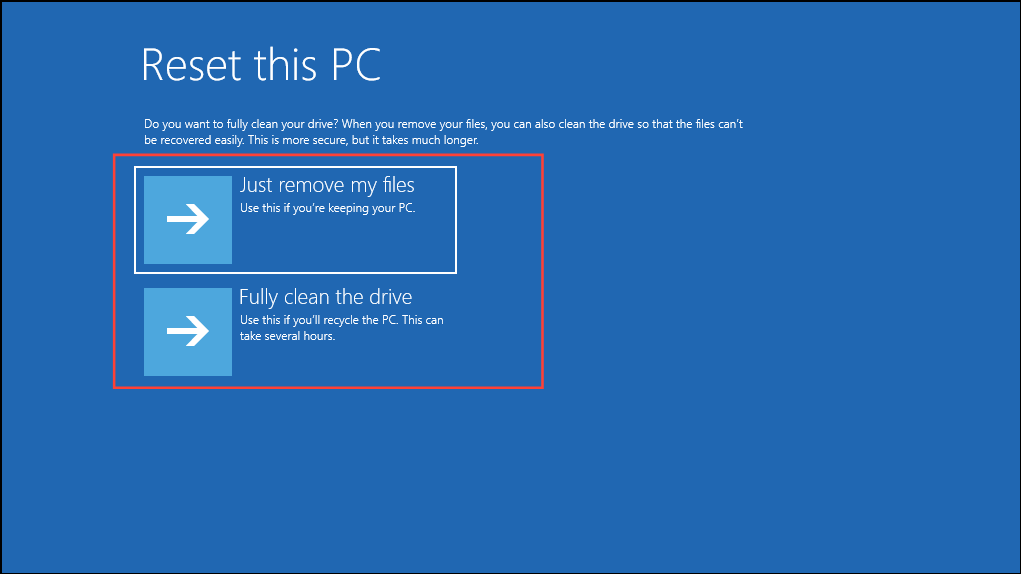
- Finally, click the 'Reset' button.

The reset process might take a bit, so just let your computer be, and make sure it stays plugged in. If, for some reason, the Windows reset fails and asks for more system files, you can give it another shot using the 'Cloud download' option. This usually happens when your current Windows setup is missing some important system files or damaged.

